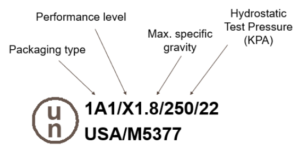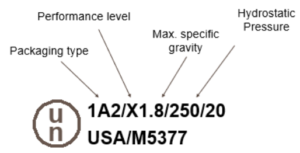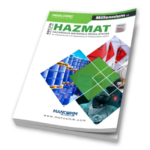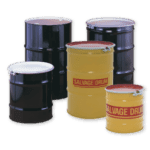Finding a UN-rated packaging that is compliant with the dangerous goods regulations could be complicated at times. Once you verify the type of packaging that you will need, the next step is to find the type of packaging you are looking for and make sure it meets the requirements of the regulations. There are some important elements to keep in mind if you are choosing to use a UN-rated drum that could be very helpful if you are shipping solids.
Solids Vs Liquids
For a drum tested as a single package, you will usually see either a UN specification marking printed on it that is rated for liquids, solids, or sometimes both. An example of a UN specification marking rated for liquids is below.
If you notice in this case, specific gravity is referenced along with the hydrostatic pressure test result. For a single packaging containing liquids, both the Hydrostatic pressure test and leakproofness test must be performed in addition to the drop and stack test.
In terms of a single package rated for solids, the UN Test marking is a bit different. Instead of a specific gravity rating, there is a max gross weight rating in kilograms, and instead of a hydrostatic test pressure rating, there is an “S,” which in this case means the drum was tested with solids. In the dangerous goods world, the “S” can have two possible meanings, it can mean the container was tested with solids, or it can also mean it is a combination package that was tested with inner containers (for example a 4G box tested with a paint can). In this case, we are talking about single packaging (drums), so the “S” means it was tested with solids.
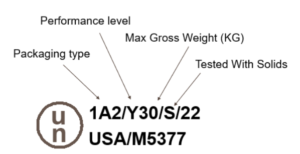
Can You Use a drum rated for liquids to ship solid material?
According to the 49CFR and TP14850, the short answer to this is yes. If your drum has a UN marking that references liquid hazardous materials (with a specific gravity and hydrostatic pressure test), you are allowed to ship solids in it, but there are some important things to note located in the 49CFR at 173.24a (b)(3) where it states:
“A non-bulk packaging not exceeding 400 kg which is tested and marked for liquid hazardous materials may be filled with a solid hazardous material to a gross mass, in kilograms, not exceeding the rated capacity of the packaging in liters, or gross mass of the package, multiplied by the specific gravity or gross mass of the package marked on the packaging, or 1.2 if not marked.”
In addition, section 12.8.4 in the TP14850 states below:
“A container prescribed for liquids may be used to transport solids if the mass of the container filled with the solid does not exceed the maximum capacity of the container, in litres, multiplied by the relative density marked on the container in accordance to clause 5.2 c or by 1.2 if there is no marked relative density.”
So, in order to figure this out, you would multiply the specific gravity listed on the UN marking, say 1.8 in the example below, by the total capacity in liters of the particular drum, let’s say for example 20 liters, it would give you the gross mass in kg you are allowed to ship solids in that container. So, in this case, 1.8 x 20 equals 36, so you would be able to ship 36KG gross mass of solids in this drum that is rated for liquids.
Now keep in mind, the opposite doesn’t hold true. You are not allowed to ship liquids in UN-rated drums that are only rated for solids because drums intended to ship liquids must have the leakproofness and hydrostatic pressure test performed on them to be compliant, and solid-rated ones do not require either of those tests. If you do have an interest in UN-rated drums rated for both solids and liquids, feel free to contact us.
You can learn more about packaging by downloading our Free Packaging Infographic or reading our UN Performance Packaging FAQ.
Stay up to date and sign up for our newsletter!
We have all the products, services and training you need to ensure your staff is properly trained and informed.
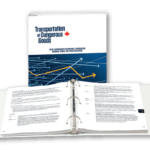 Transportation of Dangerous Goods (TDG) Regulations |


